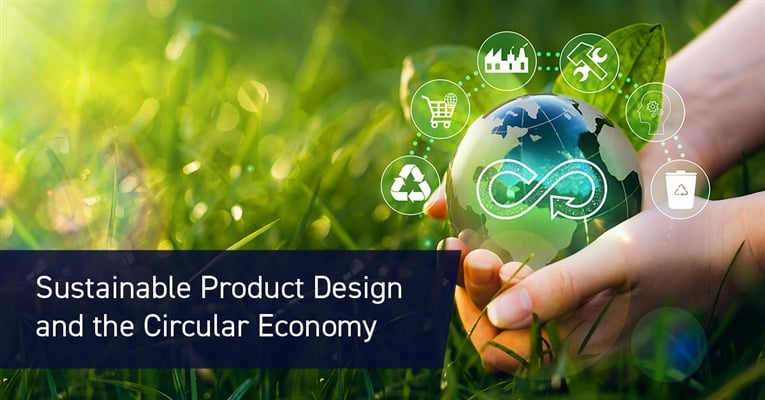Today’s blog is the second in a series on the circular economy. This post picks up where our first blog ends. You can read the first blog here: The Circular Economy as a Model for the Future.
What is “sustainable product design?” This blog will discuss how product lifecycle management (PLM) and its associated digital thread help manage sustainability in product design and development.
Sustainable product design
Sustainable product design means that products are designed with sustainability in mind and that the product's end of life is considered during the design phase.
These are additional considerations to those required for a circular economy. For a circular economy to actually emerge, products must meet many requirements, including:
- Raw material is in compliance with environmental and social criteria
- In the supply chain, all parties involved take care to keep distances short and organize only essential transport
- Products are designed for maximum service life
- Design guarantees easy repair, refurbishing, and reusability
- Designs are expandable by replacing components such as smartphone processors
Sustainable product design is a group effort
For sustainable design to be successful, involving stakeholders across the value chain is crucial. Suppliers will need to use sustainable or cradle to cradle materials. Customers will need to follow the product’s recommended use criteria. This might include returning the product to the manufacturer during the end of use phase. This means manufacturers need to create a return system for customers. Sustainable product design includes accounting for the return of the product early in the process, becoming part of the product’s digital thread.
Process tracking and the digital thread
A synergy between sustainable product design and the circular economy results from all the players being networked with one another starting at the earliest phases of product design. This requires that information exists on the product lifecycle from cradle to grave, including measurable characteristics of a sustainable product. As the digital thread is created, it tracks changes in product configuration, operating, and performance data, including IoT technologies. Data is collected as early as the extraction of raw materials and ends when the product lifecycle is complete, including information on how it will be recycled, reprocessed, or disposed of.
The role of the digital twin and digital thread in sustainable product design
The abundance of data provided in designing, manufacturing, and disposing of sustainable products cannot be managed with conventional systems. To take advantage of the sustainable product design and the circular economy, companies need to use two important tools: the digital twin and digital thread. A digital twin is an exact representation of a product after it is manufactured, updated as it changes and connected to relevant data via a digital thread.
The Aras Platform supports sustainable product design and the circular economy by:
- Making sure that data is linked together to reflect the product’s end-to-end information, including data collected from materials databases and CAD software.
- Connecting the digital twin to relevant product data from its design and manufacturing stages. The digital twin configuration is the foundation for monitoring its status throughout its product lifecycle.
- Using the individual digital twin configuration as a simulation within a virtual environment to test and analyze.
For example, a large automobile manufacturer might use a digital twin configuration of its internal logistics to record stock levels and incoming and outgoing stock. A digital twin can help to understand the impact of alternative materials and components.
The digital twin configuration can capture and subsequently serve as a source of information on the product’s sustainability using predictive maintenance to increase the useful life of the product. It allows you to calculate the remaining life and/or wear of components in order to replace them in time.
To learn why Marcellus Menges, Head of CU RD Digital Tool Chain at SICK says, “PLM is an important basic building block for achieving our sustainability goals,” read our white paper, The Circular Economy as a Model for the Future.

